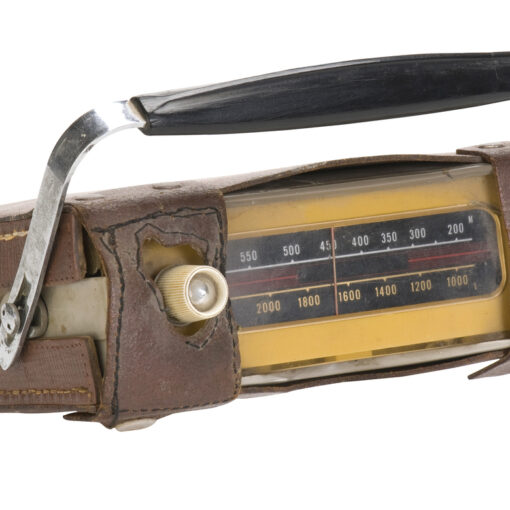As nice as it would be, no single device has enough bandwidth to pick up all radio frequencies. Therefore, most radio devices are built with specific components to pick up either narrow bands or wide bands. Although it might sound like a good idea to just combine parts to access a broader bandwidth, it’s not always a good idea. So, which is better—narrow or wide band radio?
Narrow and wideband signals both use available bandwidth to receive and transmit as much data as possible but in different ways. Narrow bands are typically better for transmitting direct information in short-range environments, such as ham radio. Wideband signals are typically reserved for denser information streams, such as television broadcasts.
If you’re unsure of their differences, keep reading. This guide will help explain the differences between narrow and wide bands, discuss some of the pros and cons of each, and explore how they are both commonly used.
What are Narrow Bands?
Any time you hear the phrase “narrow band” or “narrowband frequencies”, think of radio communications. Narrowband frequencies refer to communication broadcasts that strictly adhere to the coherence band of its channel. Coherence band refers to a standard measurement within certain frequencies that behave statistically similarly.
Narrow band radios split the entire spectrum of frequencies into specific narrowband channels. Radios then transmit across these bands on preset frequencies. This includes ham radio frequencies, AM radio frequencies, and some FM radio frequencies.
What are Wide Bands?
As its name suggests, wide bands exceed the standard coherence band, expanding out to cover a ‘wider’ range of the frequency spectrum. Wideband communications are usually used to transmit and receive denser streams of information, such as television broadcasts and some FM radio frequencies.
How are Narrow Bands and Wide Bands Different?
Other than the basic width of available frequencies, there are a few distinct differences between wide and narrow bands. In this section, we’ll quickly go over a few of the main points and explain how to differentiate the two.
Rate of Data Transmission
Narrowband frequencies are generally restricted to 100 kHz or below. This bandwidth is primarily determined by the rate of data transmission within this frequency range. Comparing the two, narrow bands can’t handle high rates of data transmission, whereas wide bands can. Considering that wide band frequencies extend from 1mHz and higher, they’re better suited for handling large streams of data and can support more information.
The Architecture of the Bandwidths
Narrow and wide bands have completely different architectures. Because narrow bandwidths are limited in their range, the architecture is split into as many useable channels as possible. Every channel has two carrier frequencies—reverse and forward channels—allowing for two-way communication. Wide bands are freer and often use the full breadth of the frequency spectrum to transmit data.
Interference and Overlap
Although narrow bands are more limited than wide bands, they are less susceptible to interference. The narrow bands are cleanly divided into channels to maximize usability whereas wide bands often cover much of the frequency spectrum. This means narrow bands are less likely to overlap each other. As wide bands increase their bandwidth, though, they become more susceptible to interference.
Selective vs Flat Fading
Wide band signals are often called selectively fading channels because they are divergently affected by different frequencies. Narrow bands, on the other hand, are known as flat fading channels because they uniformly fade into each other.
Strength of the Signal
Comparing the two, wide bands require more transmit power than narrow band signals. Narrow bands are vectorially added according to their individual phases whereas wideband signals are algebraically added. Wideband paths are isolated by the signals’ own properties whereas the interactions between narrow band paths lower the need for received power.
Ham Radio Mastery: The All-In-One Guide to Acing Your Technician Class Exam & Unlocking the World of Amateur Communication
With the guidance and support of this book, you can master the intricacies of ham radio and join the ranks of over one million ham radio operators worldwide
How are Narrow and Wide Bands Used?
Since narrow bands require less transmitting power, they’re often used to send short-range broadcasts from a fixed-located device, such as a mobile phone, remote control, car key, or even ham radio. Most ham radios built within the last 10 years have narrow band useability but keep in mind that your signal won’t travel very far on the narrow bands.
Wide band signals, on the other hand, are more often used for transmitting denser streams of information. It can pass through physical barriers, such as walls and doors, making it a popular option for television, radio, and WiFi signals. Today, 5G wireless operators are hoping to use wide band communications to spread their signals.
Which is Better—Narrow or Wide Band Signals?
Keeping in mind their differences, let’s talk a little about which bandwidth is better—narrow or wide. We’ll break this down into how usable they are:
Clarity and Noise
Wideband signals are generally better at transmitting large amounts of data since they cover a wider range of the frequency spectrum. However, because they cover a wide spectrum, they are more prone to noise and interference. Narrow bands, on the other hand, are less susceptible to noise and interference.
Narrow band signals are normally filtered to remove excess noise and interference. They are also restricted into clearly delineated channels to maximize the limited range of frequencies. This helps limit the amount of transmitting power needed to send a clear signal over narrow bands. Meanwhile, wide bands require more power to overcome possible interference and noise.
Winner: Narrow bands
Data Transmission
Without a doubt, wideband signals can carry more information than narrow bands. They cover a much wider range of the frequency spectrum and can transmit data farther than narrow bands. This is why they are more often used for advanced broadcasts, such as television, WiFi, and commercial radio. However, they require more power to produce and transmit such strong signals.
Narrow bands transmit much smaller bits of data over shorter distances and are limited to a shorter frequency spectrum. However, since they are typically quieter, narrow bands are useful for sending short-range radio transmissions, such as local communications.
Winner: Wide Bands
Applicability of the Bandwidths
You may not realize it but you likely already use both wideband and narrowband frequencies every day. They’re just used for different purposes. In your home, you probably already have narrowband devices as well as some wideband devices.
Since narrow bands require less power to generate and transmit a signal, they’re perfect for battery-operated devices that send simple signals over a short distance. Your TV remote, garage door opener, and car door opener all function off narrow bands.
More advanced electronics often use wideband signals. If you own an Apple iPhone above Generation 11, you already own a wideband device. Since wideband signals can pass through physical barriers, such as buildings, they’re often used to transmit advanced communications, including WiFi, TV, and commercial radio channels.
By dividing these channels into specific frequencies, the U.S. Federal Communications Commission is able to manage which communications go where. If they weren’t properly divided and managed, broadcasters would mistakenly transmit on the same frequencies. This would cause mass confusion and make most transmission useless.
Imagine driving down the road and tuning your vehicle to a wideband FM radio station. If the channels were not clearly delineated, multiple radio channels could broadcast on a single channel. You’d end up hearing a mess of multiple transmissions all at once and be unable to distinguish anything.
Winner: Tie – It’s difficult to say which is more applicable. Wide bands are better for high-power, high-density transmissions, while narrow bands are better for short-range low-power transmissions.
Where Two Bands Intersect
As we’ve pointed out so far, narrow and wide bands both have their uses. What’s interesting, though, is that some devices use both. We said earlier that most commercial television and radio broadcasts are sent using wide band signals but they also use narrow bands to send emergency broadcasts.
Anytime you hear the emergency broadcast go off, you’re listening to narrow bands. But why do these use narrow bands? For the same reasons why narrow bands are better suited to certain uses! They are less likely to encounter interference, require less power, and are perfect for short distances!
What About Ultra-Wide Band Signals?
As 5G data rolls out around the world, you’ve likely heard the phrase ‘ultra-wide band’. Traditionally, communications companies have limited their transmissions to the wide bands but, as we progress past 4G LTE into 5G, communications experts have begun exploring ultra-wide bandwidths that exceed 500 MHz.
These frequencies give off short bursts, requiring less power but are capable of transmitting larger amounts of data. As of 2022, though, UW bands are largely unused and remain more of a hypothetical than a daily reality.
Conclusion
If you’re a ham radio enthusiast, you’ve likely wondered what makes narrow and wide bandwidths different. It all comes down to the specific frequencies they transmit over. Narrow bands are limited to below 100 kHz, whereas wide bands take up much of the frequency spectrum. Narrow bands are better for short-distance, low-power transmissions while wide bands are better for send high-power, high-density data streams.
Ham Radio Mastery: The All-In-One Guide to Acing Your Technician Class Exam & Unlocking the World of Amateur Communication
With the guidance and support of this book, you can master the intricacies of ham radio and join the ranks of over one million ham radio operators worldwide
References
Difference Between Narrowband and Wideband






